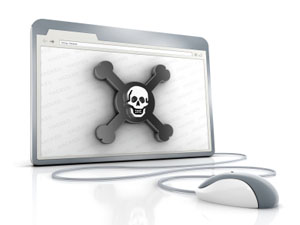How To Identify and cheapest au viagra super active online Avoid Malware
The term “malware” is used to describe a wide range of malicious software programs. This includes viruses and cheapest au viagra super active online worms, spyware and scareware. Basically, these programs and codes are developed with the intent to steal information, damage the operations of a computer or trick people into paying for an illegitimate service. Malware can include everything from Internet browser plug-ins to programs that appear to be legitimate antivirus suites.
 Typical malware infection behavior includes:
Typical malware infection behavior includes:
• Experiencing a large quantity of popup ads, even when not actively surfing websites
• Receiving a flood of spam emails
• Sudden poor computer performance
• The sudden appearance of new browser toolbars or applications
• Having credit card and other sensitive information stolen
What Are the Most Popular Types of Malware?
The most popular types of malware include viruses and worms, spyware and scareware. These forms of malware are quickly and easily spread over the Internet, and they pose the greatest risk to both home and business computer users.
Viruses and Worms
Viruses and worms are infectious malware programs that attempt to spread quickly from computer to computer, often without any user intervention. These types of infections are typically the most destructive. Viruses usually come in the form of an executable file that needs to be run on a system in order to do its damage. A worm normally does not need any user interaction to infect a machine and spread to other devices.
Viruses and worms are often used by malware authors to create backdoor access into a large amount of home or business computers. These computers are then remotely controlled by the attackers and used to populate botnets and send spam emails.
Spyware
There are two main types of spyware. The first type is typically benign and is generally referred to as “adware.” This type of spyware creates popup ads and is a general nuisance, but it does no actual harm to a computer. The second type of spyware is more nefarious. This type of spyware includes programs and codes that often act as key loggers, site redirectors and information gatherers.
The malicious form of spyware is commonly used to steal personal financial information. It records everything from keystrokes to mouse clicks and cheapest au viagra super active online then relays this information back to hackers over the Internet. The hackers then use this information to access banking sites and charge fraudulent transactions to credit cards.
Scareware
Scareware is a popular and quickly growing subtype of traditional adware. While traditional adware is mainly nuisance software used to spread ads and increase website traffic, scareware takes this scenario one step further. With scareware, the malware authors attempt to fraudulently scare computer users into buying fake software.
One of the most popular scareware scams takes the form of fake antivirus software programs. A computer user will get a popup ad that states a virus has been found, and they need to pay a subscription fee to remove the virus. After the fee is paid, nothing happens. The computer user loses the fee they paid, and the scareware remains on their computer.
Avoiding Malware
Malware is widespread on the Internet, but it is not impossible to avoid. By using safe computing habits, you can avoid malware and keep your computer free from infections. The foundation of safe computing is comprised of using legitimate, and up-to-date, antivirus software and practicing secure computing habits.
Basic secure computing habits include:
• Avoiding suspicious or shady websites
• Using popup blockers and content filters
• Never clicking on popup ads
• Never downloading unknown or unverified files from the Internet
• Never opening emails from unknown or unrecognized senders
• Using secure passwords that are periodically changed
• Never using the same password for social networking or email sites and financial sites
The Internet can be a dangerous place, and you must be vigilant to keep your computer and sensitive information safeguarded. By practicing these habits and viagra senza ricetta francia using an updated and legitimate antivirus product, you will be able to successfully avoid the vast majority of malware infections.

